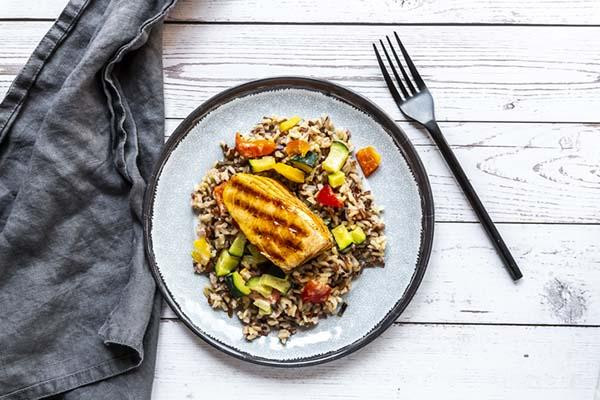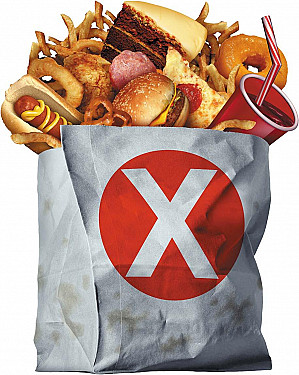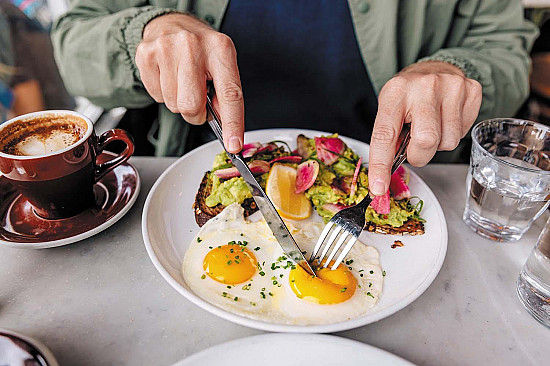Creating balanced, healthy meals from low-calorie, nutrient-dense foods
- Reviewed by Robert H. Shmerling, MD, Senior Faculty Editor, Harvard Health Publishing; Editorial Advisory Board Member, Harvard Health Publishing

Low-calorie, nutrient-dense foods provide vitamins, minerals, protein, and other important nutrients without unnecessary calories. By fueling your body with these foods, you can enjoy delicious, satisfying meals that keep you energized and support a healthy weight.
Why reach for low-calorie, nutrient-rich foods?
The standard American diet tends to be energy-rich but nutrient-poor, providing plenty of calories without sufficient nutrients. This way of eating is high in "empty calories,” meaning rich in added sugars, unhealthy fats, and sodium but low in vital nutrients. Consuming too many empty calories can lead to weight gain and increase risk of chronic diseases like heart disease, diabetes, and certain cancers.
By contrast, nutrient-rich foods offer more nutritional value per bite and can help promote health and overall well-being. Nutrient-rich or nutrient-dense foods contain a high concentration of vitamins, minerals, fiber, and other vital nutrients such as proteins, carbohydrates, and healthy fats. Low-calorie, nutrient-rich foods help you obtain these nutrients without excessive calories, so these foods help meet your nutritional needs while supporting a healthy weight.
The FDA has specific definitions for low-calorie claims on food labels. A food can be labeled as low-calorie if it contains 40 calories or less per serving. Meals and main dishes are considered low-calorie if they contain 120 calories or less per 100 grams.
Best choices for low-calorie, nutrient-dense fruits and vegetables
Fruits and vegetables are the quintessential low-calorie, nutrient-rich foods. Full of essential vitamins, minerals, and fiber, fruits and vegetables benefit overall health. In addition, most fruits and vegetables are naturally low in fat and contain no cholesterol, making them heart-healthy choices. Plus, they can pack in the fiber, which aids digestion, helps manage blood sugar levels, and can lower cholesterol.
Fruits and vegetables are also rich in phytochemicals — natural compounds like beta-carotene, lutein, and lycopene. Phytochemicals have been linked to a reduced risk of chronic diseases including heart disease, diabetes, and certain cancers.
Try to eat a variety of colorful fruits and vegetables every day. Some excellent choices for low-calorie, nutrient-rich fruits and vegetables include:
Leafy greens
- Kale: 8 calories per cup (raw)
- Swiss chard: 7 calories per cup (raw)
Cruciferous vegetables
- Broccoli: 31 calories per cup (chopped, raw)
- Cauliflower: 27 calories per cup (chopped, raw)
- Brussels sprouts: 38 calories per cup (raw)
- Cabbage (green or red): 22 calories per cup (shredded, raw)
Fruit
- Strawberries: 25 calories per 1/2 cup
- Blackberries: 32 calories per 1/2 cup
- Grapefruit: 43 calories per half of fruit
- Kiwi: 48 calories per whole fruit.
Low-calorie, high-protein food options
Protein is an essential nutrient your body needs to function properly. It’s key for building and maintaining muscle, supporting healthy skin, and promoting overall well-being. Protein plays a crucial role in keeping you feeling full, which can help with weight management.
Lean meats and poultry are excellent sources of protein, as well as vitamins such as vitamin B and minerals including iron, and zinc. Seafood is another nutritious, low-calorie high-protein option.
Plant-based proteins such as beans, lentils, and chickpeas are rich in protein and fiber. Nuts and seeds also offer protein, though it’s best to enjoy them in moderation due to their higher calorie content. For example, one ounce of peanuts contains 160 calories.
Dairy products like milk, yogurt, and cheese are valuable protein sources that also provide calcium, vitamin D, and potassium. Choose nonfat or low-fat dairy to help control calories.
Some excellent choices for low and lower-calorie, high-protein foods include:
Lean meats and poultry
- Chicken breast (rotisserie): 122 calories per one thick slice
- Turkey breast (roasted): 147 calories per 100 g
- Pork tenderloin (lean cut): 143 calories per 100 g
Seafood
- Cod: 84 calories per 100 g
- Tilapia: 100 calories per 100 g fillet
- Tuna (canned, white albacore, in water): 110 calories per 5-ounce can
Plant-based proteins
- Lentils (cooked): 114 calories per 100 g
- Chickpeas (cooked): 164 calories per 100 g
- Edamame (cooked): 140 calories per 100 g
Dairy
- Cottage cheese (low-fat): 80 calories per 1/2 cup
- Greek yogurt (plain, low-fat): 73 calories per 100 g.
What are the best choices for nutrient-dense carbohydrates?
Carbohydrates are a key energy source for our bodies, but some are better than others.
Whole grains such as brown rice, oats, barley, and quinoa provide essential nutrients, including fiber, vitamins, minerals, and antioxidants. By contrast, refined grains like white flour and white rice lose much of their natural fiber and nutrients during processing.
Even though whole grains aren't significantly lower in calories than refined grains, they contain more nutrients — including fiber, which helps with digestion and keeps you feeling fuller longer. Just keep portion sizes in mind (they may be smaller than you are used to).
Some excellent choices for lower-calorie, whole-grain foods include:
- Quinoa (cooked): 120 calories per 100 g
- Barley (cooked): 123 calories per 100 g
- Oatmeal (cooked): 71 calories per 100 g
- Brown rice (cooked): 112 calories per 100 g
- Bran flakes cereal: 98 calories per 3/4 cup.
A nutritious, low-calorie menu
Aim for a balanced eating pattern rich in fruits and vegetables, with moderate amounts of whole grains and lean proteins, with some healthy fats. This approach ensures you're getting the nutrients your body needs while maintaining a healthy calorie intake.
This sample nutrient-dense menu provides a variety of vitamins and minerals and comes in at under 1,200 calories. You can mix and match foods on this menu with some of the other low-calorie, nutrient-dense foods discussed in this article.
Breakfast
- 8 ounces nonfat yogurt
- 1/2 cup sliced papaya
- 1/2 cup sliced kiwi
- 1 ounce (14 halves) walnuts
- 8 ounces black coffee
- 4 ounces skim milk
Lunch
- 1 small whole-wheat pita
- Green salad (1 cup dark green lettuce, 1 red or orange pepper, 1 cup grape tomatoes, 1/2 cup edamame beans, 1 tablespoon unsalted sunflower seeds); salad dressing (1 tablespoon olive oil, plus balsamic vinegar and pepper)
- Unsweetened iced tea or water
Dinner
- 4 ounces broiled wild salmon and yogurt sauce (1 tablespoon Greek nonfat yogurt, 1 teaspoon lemon juice, 1 clove chopped garlic)
- 1/4 cup cooked barley
- 1/4 cup cooked lentils, with spices to taste
- 1 cup steamed baby bok choy
- Water.
About the Author

Jenette Restivo, Health Writer; Assistant Director for Digital Content Creation and Engagement, Harvard Health Publishing
About the Reviewer

Robert H. Shmerling, MD, Senior Faculty Editor, Harvard Health Publishing; Editorial Advisory Board Member, Harvard Health Publishing
Disclaimer:
As a service to our readers, Harvard Health Publishing provides access to our library of archived content. Please note the date of last review or update on all articles.
No content on this site, regardless of date, should ever be used as a substitute for direct medical advice from your doctor or other qualified clinician.















